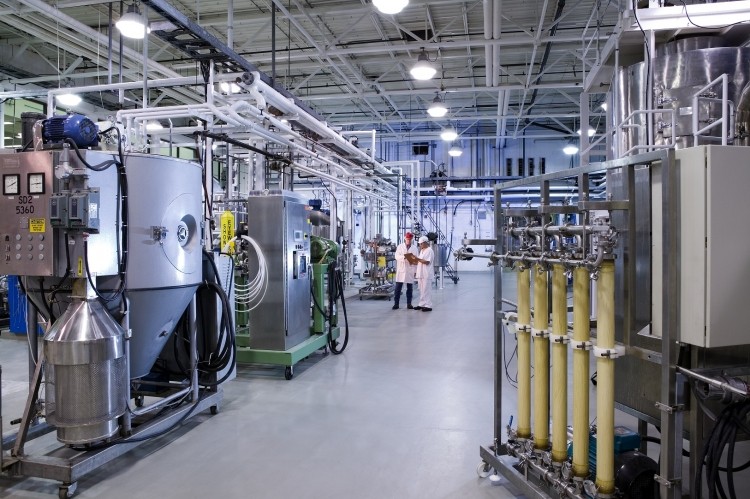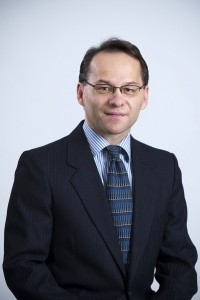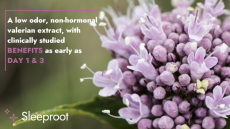Microalgae, protein fractions, and ‘co-products’: POS VP of technology talks next big trends

POS Bio-Sciences, a contract R&D, custom processing and lab analysis service provider located in Saskatoon, Canada, is able to identify trends ahead of a lot of people, based on its extensive work with everyone from entrepreneurs to multi-nationals. “We saw the beta-glucan trend in the late 80s and early 90s,” Dr Green told us. “And we did a lot of work with phytosterols in the late 90s.”
One trend the company sees is the whole product approach, utilizing everything, including the waste stream. “We’re seeing a lot of interesting in ‘co-products’,” he said. “We don’t talk about by-products or waste products, they’re co-products. We’re looking at all the streams coming out of the plant.”
“Microalgae is really booming,” he added. “We have microalgae extract lines that can work from 200 gram samples to 300 lbs per hour. Probably about 65% of business is in microalgae,” he said, and that’s for both nutritional lipids for food and in the biofuel sector.
Natural ingredients are another trend, he said, with clean-label demands driving demand, as are non-allergenic foods.
Between 60 and 70% of the company’s business is in the dietary supplement and functional food sector, including omega-3s and novel plant proteins and bioactive peptides.
Protein
When it opened its doors in 1977 POS originally stood for protein, oil and starches, and began life being funded by the Canadian government (1% total earned revenue to 99% government funding). In 2009 it transitioned to a private company and became POS Biosciences. It opened its doors in 1977 as a government funded, and gradually weaned itself off government support to became 100% self-sufficient.
The POS now stands for people, organization and solution, said Dr Green. Despite the name change it still does a lot of work with protein. “Protein fractions are another trend to watch,” he said, “with companies seeking out heat stable and water soluble protein fractions.”
A lot of work has been done with pea protein and protein from a variety of other pulse sources, including lentils and chickpeas. Approaches include changing the solvent protocol or using a lower temperature to create a higher value protein with higher solubility, or a higher value meal.
The protein trend is not slowing down but is becoming more sophisticated, he said.
Case studies
With microalgae blooming, the company continues to do a lot of work with oils, particularly omega-3 oils. Expertise in the omega-3 sector includes working with Ocean Nutrition Canada (now part of DSM Nutritional Products) to enhance the quality characteristics of the company’s marine oil products. Other projects with ONC included enhancing stability and sensory traits by increasing the oxidative stability in ONC’s finished products. According to POS, this research enhanced taste and increased shelf-life stability by up to as much as 24 months.
In terms of omega-3s, it’s not just about refining oils, said Dr Green, but on fractionation, which concentrates the omega-3 level from the crude oil.
Bioriginal were another client to benefit from POS’ expertize in nutritional lipids, with the two working together since the early 1990s to optimize and scale-up extraction and purification processes.
Other projects of note include working with Bio Exx on its canola protein, and Brassica Protection Products LLC on its glucoraphanin products extracted from broccoli.
ROI
“We are an extension of our clients’ R&D services,” saidDr Green.
POS currently has 96 employees and works with clients in 40 countries. “About 70% of our revenues are from the US.”
And it pays to work with POS, according to an independent consultant’s report completed in 2011, which found that, over 35 years, the technologies resulting from clients’ work at POS Bio-Sciences, when commercialized, generated $65 for every dollar invested by a client into POS. The report also found that 62,000 jobs were created and over $6 billion in new sales generated over that 35 year period.
Flexibility
To have their metaphorical fingers in so many pies requires flexibility. “We have a lot of equipment on wheels and rails,” said Dr Green, “and we can produce all kinds of different designs. We have over 100 pieces of major equipment, and over 1,000 pieces of different items in our inventory.”
The organization boasts a multi-scale facility, going from the bench-top and yields in the 2 kg range, up to mini-pilot scale of 20 kg in 8 hours, and up to full pilot scale with production of 200 kg to several tons per week.
“Our versatility is what sets us apart,” said Dr Green. “We’re a one-stop-shop going from the bench top to custom processing. And our people are vital – we have scientists who have at least 15 years of experience with us.”
















